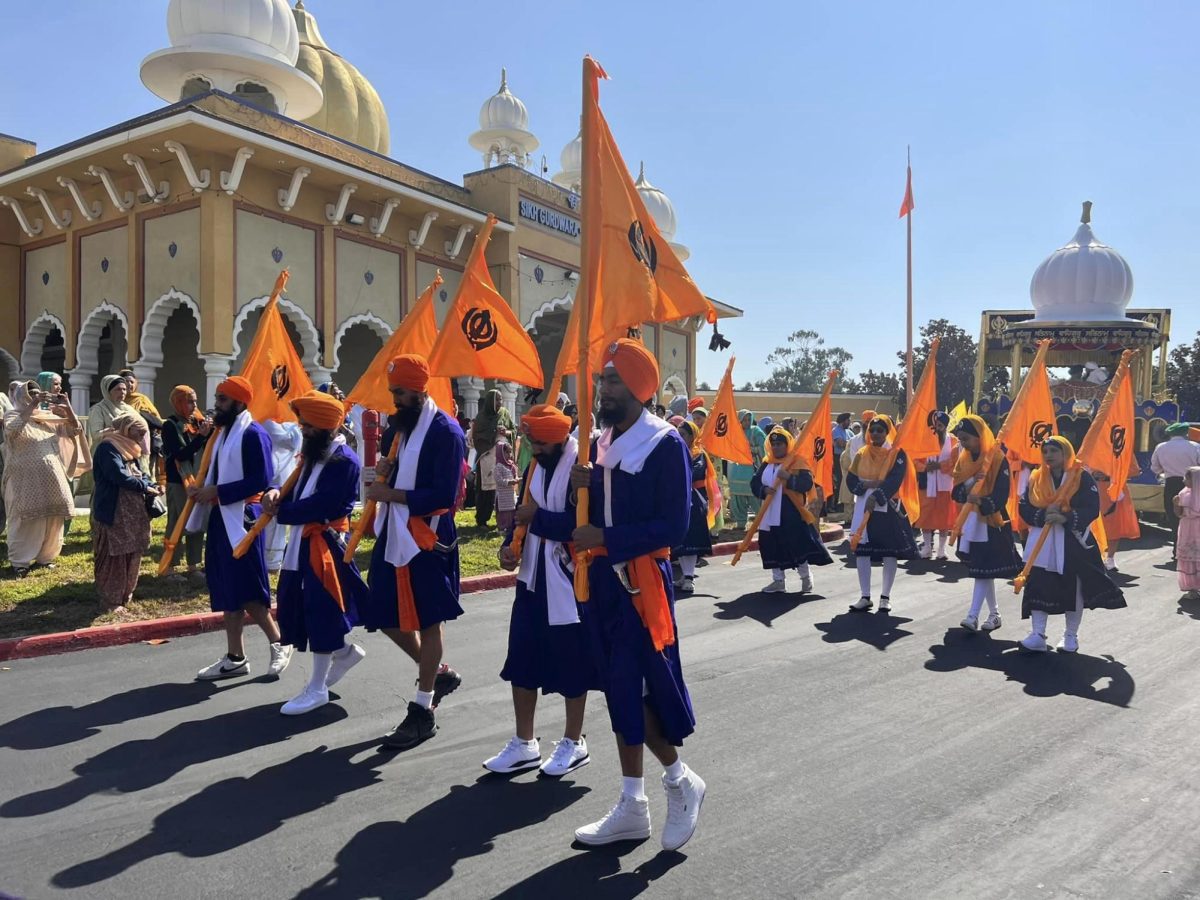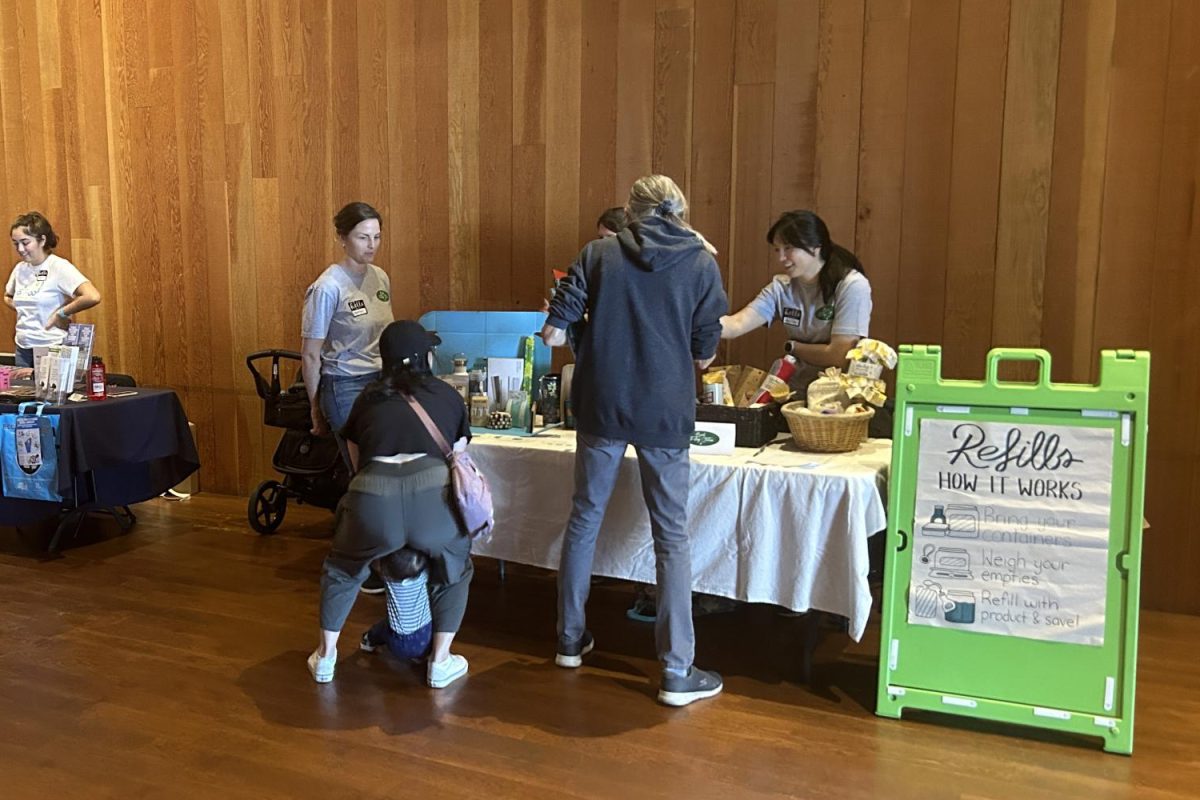The California Sikh community marked the Prakash Purab, a day dedicated to honoring the installation of their Guru, Guru Granth Sahib Ji, with a citywide celebration in San Jose. The event was filled with cultural festivities, sacred hymns, and various activities for everyone to enjoy.
On Sept. 24, 2023, hundreds of Sikhs from across California gathered to commemorate Sikh culture and spread awareness about the Sikh religion in San Jose.
“Sikhs have a large presence in California, especially in the Bay Area, yet there aren’t many people that know who we are. The goal of this nagar kirtan is to celebrate our heritage and invite the local community to celebrate and partake in the joyous occasion,” said Inderjeet Kaur, an event attendee.
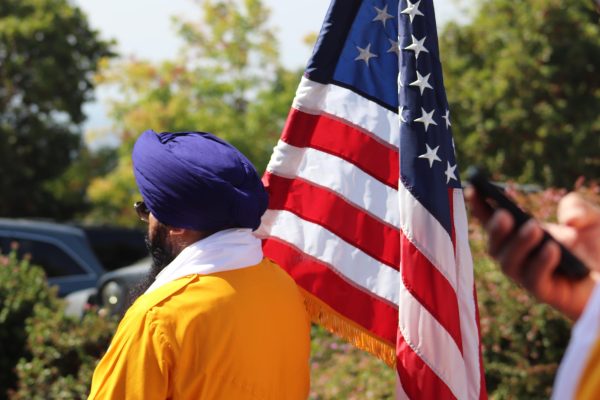
The annual Nagar Kirtan– a Sikh religious parade where devotees march through streets, singing hymns and celebrating Sikh occasions– is a very popular and anticipated occasion for the Sikh community.
Every year, merchants travel from India, Canada, and other regions in the United States to sell their goods at the Gurdwara. The makeshift marketplace comprises clothing stalls, ethnic jewelry selections, book sales, and more.
Many attendees flock to the langar– a selection of vegetarian food that is free to the public– and food stalls consisting of Northern-Indian food like garlic naan, bhathoore (fried flatbread), choley (chickpeas curry), pakora (savory fritters), falooda (tapioca and ice cream milk floats), and mithai (sweets). Langar plays a significant role in the Sikh beliefs of unity, equality, community service, and hospitality.
The most popular activity, however, is the procession itself. Guru Granth Sahib, the Sikh holy scripture, is paraded in a large float. The congregation marches around an approximately four-mile trail as they sing Kirtan– religious hymns composed in musical poetic format.
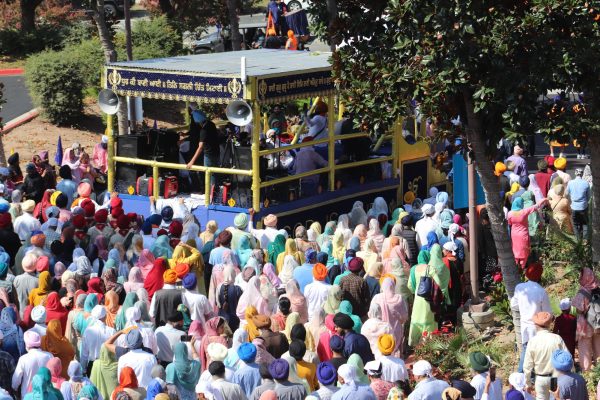
Followed by the congregation, students can display their skills in Gatka. This traditional martial art form originated in the Punjab region of India, primarily among the Sikh community. It is a martial art that incorporates both armed and unarmed combat techniques and is closely associated with Sikh culture and history. Gatka training involves using various weapons, such as swords, sticks, and daggers, as well as techniques for hand-to-hand combat.
Gatka is not only a martial art but also a cultural and spiritual practice. It has historical significance as Sikh warriors used it to defend their faith and protect their community during conflict. In modern times, Gatka is practiced as a martial art for self-defense and to preserve Sikh heritage and traditions.
“Gatka is more than just physical training; it’s a spiritual exercise. It teaches us to always be able to defend those in need and be able to fight against injustices. The notion of a sant-sipahi, or a saint-soldier, is significant in Sikh history and culture. The history of Sikhi has been built upon the fight against injustice– be it against the Mughals, the colonial British government, during the World Wars, or against injustice imposed by governments today,” said Fateh Singh*, a spectator of the Gatka demonstration.
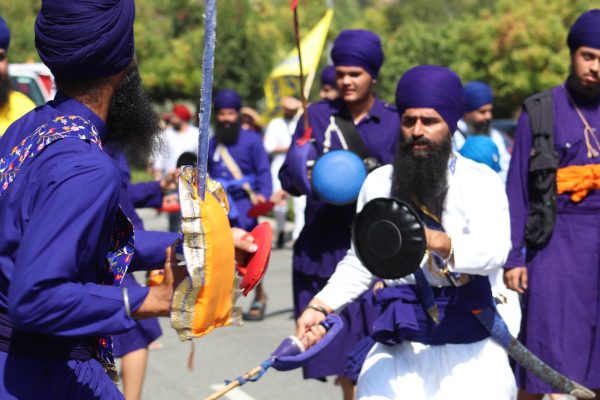
Another initiative displayed at the Nagar Kirtan is the dastaar workshop, where people of all ages can learn to tie a turban. The turban is an integral part of the Sikh identity. It signifies a commitment to Sikh values and beliefs. Sikhs wear turbans to display their faith and spirituality proudly. Wearing a turban is a visible sign of commitment to equality. In Sikhism, all individuals are considered equal, regardless of their caste, creed, gender, or social status. The turban serves as a reminder of this core tenet. Historically, Sikhs wore turbans as an assertion of their courage and freedom. During times of persecution and conflict, they wore turbans as a sign of their readiness to defend their faith and protect the oppressed.
This year, some Sikhs also gathered to protest against the Indian government for its alleged human rights violations against the Indian-Sikh population and spread awareness about hate crimes against Sikhs in the United States, Canada, and the rest of the West.
The Nagar Kirtan celebrates a religious milestone in Sikh history but also paves the way for Sikhs to hit new milestones.
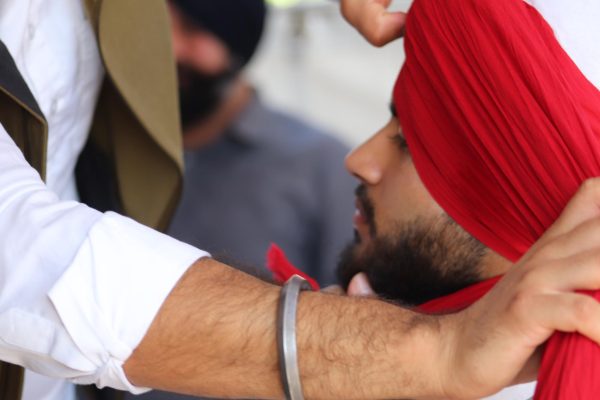
“It is important to have events like [the Nagar Kirtan] to help the Sikh youth connect to their roots. It brings me so much pride and joy to see so many young boys and girls participating, doing seva (service), Kirtan, Gatka, and connecting with their community,” Singh said. “When we leave our home country, it is difficult to tether ourselves to our roots and culture. Our youth has become so connected with their American identity that they have lost the essence of their Sikh values.”
In addition to connecting with their roots, Sikhs have used the Nagar Kirtan to spread awareness about their diverse culture and values.
“I’ve lived in this area for a few years now, and every year, I eagerly wait for another Nagar Kirtan to happen. I’ve got to meet so many people, and I love listening to the Kirtan at the Gurdwara. My husband and I love coming here and having langar. Sikhism is such a beautiful religion that is so open to other cultures. I always feel welcome at the Gurdwara, and the Sikh community goes out of their way to help us integrate, understand, and cherish their culture,” said Elizabeth Steinser, a San Jose resident. “I’ve truly grown to appreciate the religion and the culture. I look forward to the next Nagar Kirtan as well!”
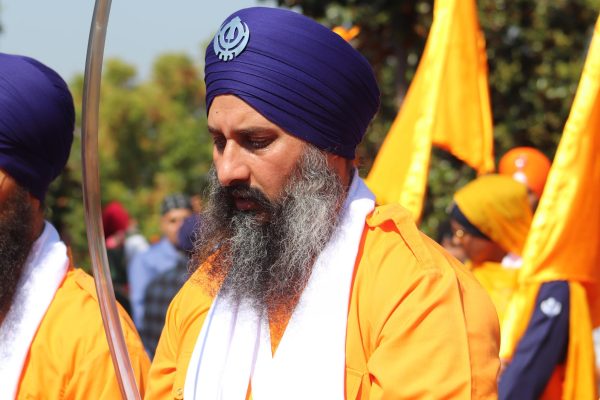
The Nagar Kirtan in San Jose is a vibrant celebration of Sikh culture and values, bridging communities and fostering understanding. It preserves heritage while promoting unity and friendship. As the procession concludes, it leaves a sense of pride and unity, reminding of the beauty of diversity and the importance of cultural exchange.
*This interview was conducted in Punjabi, and the responses were translated into English.


